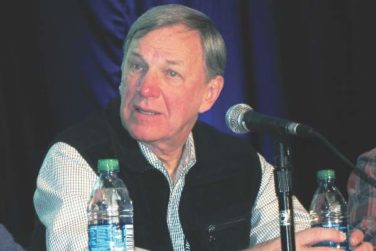FROM CHEST
Postoperative oxygen therapy in patients with previously undetected obstructive sleep apnea (OSA) led to a reduction in apnea-hypopnea index (AHI) events per hour with no increase in apnea-hypopnea event duration.
The results suggest that postoperative oxygen could be useful in patients with OSA who refuse continuous positive airway pressure (CPAP) therapy, those with newly diagnosed OSA, and those with suspected OSA.
The researchers set out to determine if postoperative oxygen therapy could improve oxygenation in patients with previously undiagnosed OSA, reasoning that the intervention could reduce adverse events.
The study, published in CHEST (2017 March;151[3]:597-611), provided generally good news, but with a caveat: “Essentially we are saying, yes, if you give supplemental oxygen, you improve oxygenation of the patient. But overall we have to be careful because a significant number of patients have significant carbon dioxide retention when receiving supplemental oxygen. So we have to monitor patients – not just oxygen, but we may have to monitor carbon dioxide levels, too,” said lead study author Frances Chung, MBBS , professor of anesthesiology at the University of Toronto and Toronto Western Hospital.
The researchers randomized 123 patients with an AHI of at least five events per hour to postoperative oxygen (3 L/min for 3 nights via nasal prongs) or no postoperative oxygen.
On the third night, the oxygen group had a higher average oxygen saturation than controls (95.2% plus or minus 3.2% vs. 91.4% plus or minus 3.5%; P less than.0001) and a lower oxygen desaturation index (median, 2.3 events per hour vs. median, 18.5; P less than .0001).
A lower number of AHI events per hour occurred in the oxygen group (median, 8.0) than in the control group (median, 15.6; P = .016).
On average, the longest apnea-hypopnea event (median, 33.8 seconds) was shorter for a patient on oxygen, compared with a patient who did not receive oxygen (median, 49.6 seconds; P = .002).
But one finding surprised the researchers and led to some concern: Across both groups, 11.4% of patients experienced substantial CO2 retention. Specifically, for at least 10% of 1 of the nights, these patients had a partial pressure of CO2 of at least 55 mm Hg, according to measurements taken with a transcutaneous CO2 monitor. Of the 14 patients who experienced this event, 13 were receiving oxygen.
Dr. Chung said the results argue strongly for postsurgical oxygen in patients with OSA, who are known to be at increased risk for complications. “We are not doing something about it, and we should be doing something. Because one death from a complication is too many,” she said.
The study was funded by the University Health Network Foundation, Toronto, and the University of Toronto. Dr. Chung reported receiving research grant support from Ontario Ministry of Health Innovation Grant, University Health Network Foundation, ResMed Foundation, Acacia, and Medtronic.





